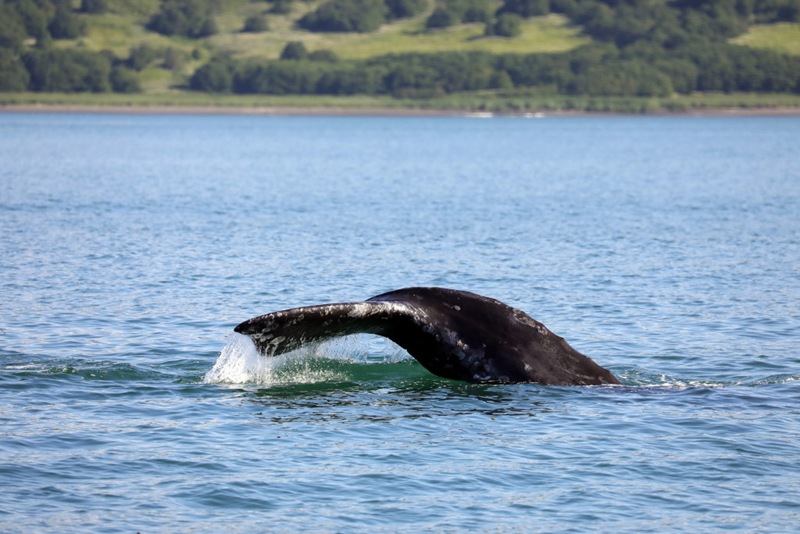140 gray giant whales from the rarest Okhotsk population listed in the Red Book have already arrived in the protected waters off the coast of Kamchatka this season. Scientists of the Kronotsky Nature Reserve have been constantly monitoring them since the beginning of May, noting the successes of the feeding group, which is recovering after a long and difficult journey.

These giants make one of the longest journeys in the animal world. Wintering and the birth of offspring take place in the warm waters off the coast of Mexico, after which the whales head north to the forage-rich waters. Kronotsky Bay is one of the key places where they actively feed in order to accumulate fat reserves. Now many animals, especially females, look very thin. The grueling migration, birth and feeding of a baby with milk take up a huge amount of energy, so mothers with whales are fed almost around the clock.
Researchers have already recorded 16 pairs of mothers with cubs. Six of these females produced offspring last year, which indicates a healthy two-year reproductive cycle. According to marine biologist Evgenia Volkova, the regular appearance of offspring is a “great sign” indicating that the conditions for feeding are favorable, and there is enough food for the whales to successfully carry and nurse their young.
This year, the photo catalog of Kamchatka gray whales has been updated with 52 new unique individuals, and now it contains 263 animals. The current number of registered whales – more than 140 – already exceeds the final figure of the last field season, when 96 individuals were observed in six months. However, scientists warn against jumping to conclusions about a sharp increase in the population.
Fluctuations in the number of registered animals from year to year are a normal phenomenon. As Evgenia Volkova explained, this may be due to research efforts: for example, last year, unfavorable weather often prevented boats from going out to sea, which could have caused some of the whales to go unnoticed. An objective picture of the population’s condition can only be obtained as a result of many years of continuous research, since gray whales are long–lived animals with a complex life cycle.
The Okhotsk, or western, gray whale population is critically endangered and is listed in the Red Book of the Russian Federation as requiring immediate conservation measures. At the end of last year, the Russian Ministry of Natural Resources and Environment approved a special Conservation Strategy for these marine mammals, which underscores the importance of protecting them.